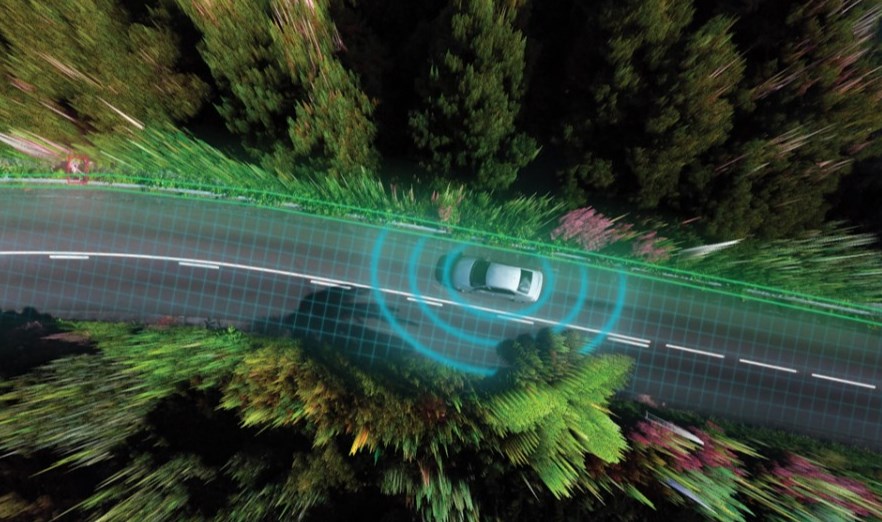British Columbians aren’t quite ready for self-driving vehicles (SDVs) and will need a gradual transition to the new technology, according to new B.C. study.
“People who harbour anxiety or discomfort regarding new technology were more likely to hold a negative bias against SDVs,” said Gurdiljot Gill, a civil engineering PhD candidate at the University of British Columbia who conducted the study.
“Similarly, residents in the Lower Mainland tended to adopt a more critical viewpoint, likely because there are more pedestrians in this urban region,” Gill aid.
In a statement, B.C.’s Ministry of Transportation and Infrastructure cautioned B.C. laws do not yet permit driverlessvehicles on the province's roads.
The study, carried out at UBC's Research on Active Transportation Lab (REACT), canvassed 1,133 B.C. participants to assess public sentiment toward self-driving vehicles.
Researchers had participants watch eight video clips showing interactions between pedestrians and vehicles at crosswalks. Half of the vehicles were labelled as self-driving, while the other half was marked as human-driven (humans operated all the vehicles in the videos, but he test design allowed the researchers to detect biases in perceptions).
In the end, four out of 10 participants (41 per cent) thought that pedestrians faced reduced safety and comfort levels during interactions with autonomous vehicles compared to conventional human-driven vehicles. Another 34 per cent viewed SDV interactions more favourably, while 25 per cent reported no bias in either direction.
The study revealed many British Columbians held mixed perceptions of automated vehicles, particularly their effects on pedestrian comfort and safety.
“At this critical point in the introduction of automated vehicles, it is essential to understand and consider their effects on everyone who shares city streets – especially pedestrians,” said , associate professor of civil engineering at UBC and REACT principal investigator.
Opinions also diverged on the broader question of permitting autonomous vehicles on public roads. Among those surveyed, 55 per cent voiced support for allowing shared SDVs, such as taxis or shuttles, while 48 per cent backed privately owned self-driving cars.
However, there was marked consensus around regulation: up to 92 per cent of participants approved of rules such as ensuring driverless cars have identifying marks and requiring a human driver in the driver’s seat, prepared to take control in an emergency.
B.C. government 'actively monitoring' development of automated vehicles
B.C.'s transportation ministry said Transport Canada is responsible for safety standards when it comes to the design, construction and importation of motor vehicles into Canada.
Transport Canada regulations don’t permit the general sale and import of fully automated vehicles in Canada unless the importer has obtained a special exemption from the federal minister of transportation.
“The ministry is actively monitoring the development of fully automated vehicles as they are being tested in B.C. and other jurisdictions, particularly from a safety point of view,” the B.C. ministry said in a statement to Glacier Media.
“We are active participants on Transportation Association of Canada’s Connected and Automated Vehicle Integrated Committee, which provides opportunities for collaboration with other jurisdictions.”
The ministry added that the “work will continue” as technology and federal guidelines advance. Safety, said the B.C. ministry spokesperson, will remain a priority for the working group and the ministry.
Bigazzi said “a lack of proactive policy” in some jurisdictions has led to “problems and missed opportunities” when it comes to integrating new technologies and advancing goals around sustainable, equal and accessible transportation.
“We hope this research enables policy-makers to ensure that the introduction of automated vehicles is strategic and directed toward the public good,” Bigazzi said.
Self-driving car regulation
Given the complexity of public sentiments, the UBC researchers have proposed a gradual introduction of SDVs on city streets — starting with a controlled pilot testing phase — to address safety concerns and avoid negative impacts for pedestrians and other travellers.
They also advised running robust public education campaigns to build familiarity and emphasize the potential benefits of self-driving cars. Alongside that, they suggested starting a pilot testing program with shared rather than private autonomous vehicles.
Other recommendations include requiring that SDVs:
Adopt more conservative road behaviour than human-driven cars, particularly in urban settings — such as allowing an additional two to four seconds for pedestrians at crosswalks, and using external communication features to signal their automation to other road users;
have a human in the driver’s seat, to take control in an emergency;
avoid designated pedestrian priority zones, like those around schools.
The researchers say the study, funded by TransLink, is the first to measure perception biases in the population toward automated vehicles.
In its Transport 2050 Strategy, TransLink noted, “we’re living in an era of rapid change and disruption and are on the cusp of some dramatic evolutions in technology.”
“Automation could touch every part of transportation, and automated vehicles could be carrying a majority of personal trips within the time horizon of this strategy.”



